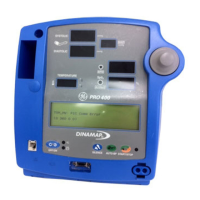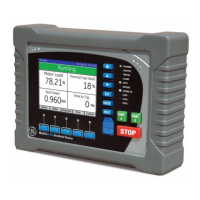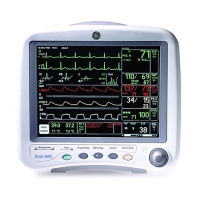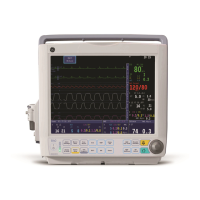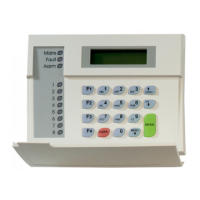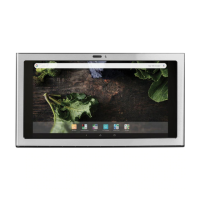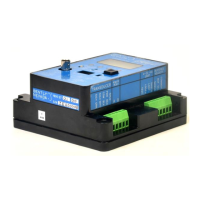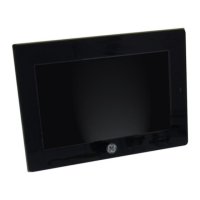11-4 Dash™ 3000/4000/5000 2000966-386D
Monitoring SpO2
WARNING
MASIMO SET CABLES AND SENSORS —Do NOT immerse
sensors or patient cables in water, solvents or cleaning solutions. Do
NOT reuse sensors intended for single patient use. Do NOT sterilize
sensors or patient cables by irradiation, steam, or ethylene oxide.
CAUTION
MASIMO SET CABLES AND SENSORS—Tissue damage can be
caused by incorrect application or use of an LNOP or LNCS sensor,
for example by wrapping the sensor too tightly. Inspect the sensor
site as directed in the sensor’s directions for use to ensure skin
integrity and correct positioning and adhesion of the sensor.
Do not use damaged LNOP or LNCS sensors.
Do not use an LNOP or LNCS sensor with exposed optical components.
Do not immerse the sensor in water, solvents or ethylene oxide. Refer to the
cleaning instructions in the directions for use for reusable Masimo LNOP or
LNCS sensors.
Always disconnect the LNOP or LNCS sensor from the cable before
repositioning the sensor. Reconnect the cable to the LNOP or LNCS sensor after
the sensor has been repositioned.
Nellcor
The following measurement guidelines apply to Nellcor:
The time period for acquiring a measurement average is adjustable.
The pulse oximetry is calibrated to display functional saturation.
The signal strength indicator denotes signal quality. Zero asterisks indicate low
signal quality; three asterisks indicate high signal quality. The signal strength
indicator is not proportional to pulse amplitude.
The SpO
2
waveform corresponds to (but is not proportional to) the arterial
pressure waveform.
Use the following guidelines when using OxiMAX SpO
2
accessories and sensors:
WARNING
—Intravascular dyes (such as indocyanine green, mythylene blue,
etc.) and darkly pigmented skin can adversely affect SpO
2
readings.
WARNING
—Oximetry performance may be impaired when patient perfusion is
low or signal attenuation is high.
